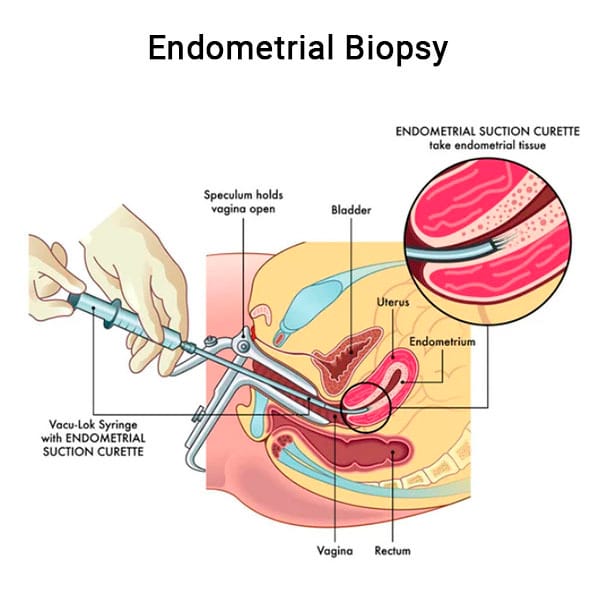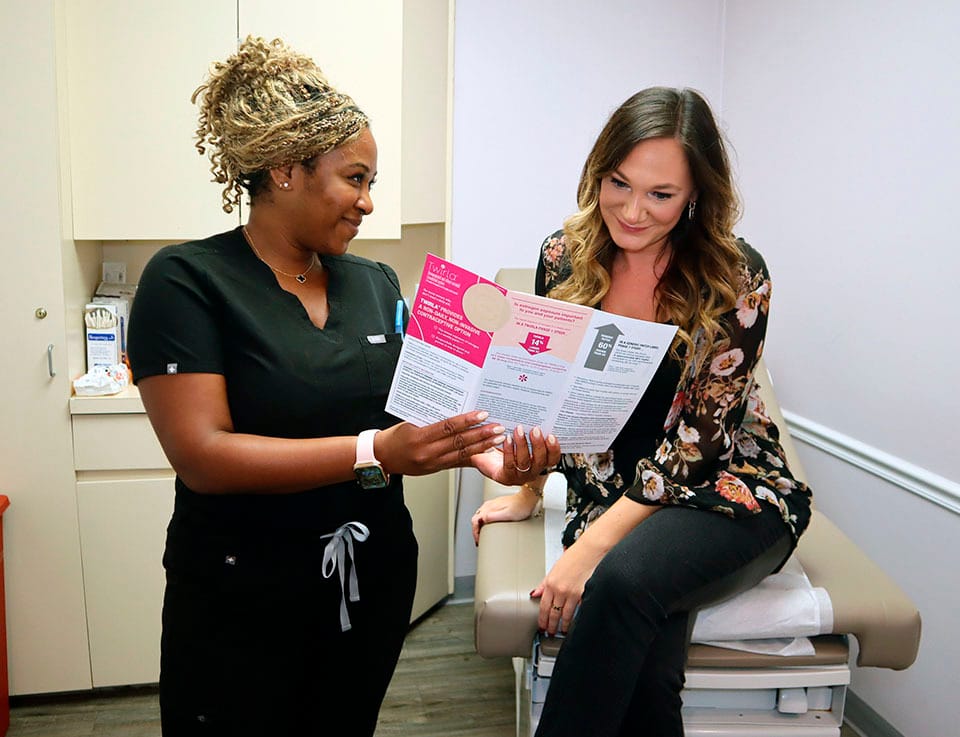What Is an Endometrial Biopsy?
 An endometrial biopsy is a procedure used to check the lining of the uterus for any abnormal cells or conditions. It’s performed to diagnose conditions that typically include abnormal uterine bleeding. A small sample of tissue is removed from the endometrium. It’s often part of a test used to detect endometrial cancer.
An endometrial biopsy is a procedure used to check the lining of the uterus for any abnormal cells or conditions. It’s performed to diagnose conditions that typically include abnormal uterine bleeding. A small sample of tissue is removed from the endometrium. It’s often part of a test used to detect endometrial cancer.
When you experience any type of unusual bleeding or other non-typical symptoms, you need to rely on an experienced physician for an accurate diagnosis and subsequent effective treatment. In Midtown NYC, find that expertise in Dr. Felix Cohen at Cohen Medical Practice (CMP).
Why Might My Doctor Recommend an Endometrial Biopsy?
An endometrial biopsy is recommended when you’re having symptoms and conditions affecting your uterus. The most common reason for getting this biopsy is abnormal bleeding, which may include heavy menstrual bleeding or signal the presence of ovarian polyps or uterine fibroids.
Other reasons that you may need an endometrial biopsy include:
- Diagnosing endometriosis. It’s a key tool for diagnosing endometriosis, when you experience symptoms like pelvic pain and vaginal inflammation.
- Postmenopausal bleeding. Bleeding after menopause is often a sign of endometrial cancer and so a tissue sample is critical.
- Checking uterine conditions. If the tissue is benign, you may have adenomyosis.
- Diagnosing endometrial hyperplasia. A biopsy can confirm if your uterine lining is becoming abnormally thick, which often is a pre-cancerous stage.
In certain medical scenarios, your doctor might not recommend you undergo an endometrial biopsy. If you’re pregnant, then you’re not fit for a biopsy as it may harm the pregnancy or cause future complications.
Other reasons for not getting a biopsy include:
- Pelvic inflammatory disease
- Cervical stenosis
- Allergies
- Previous cervical surgery
- Structural issues in the uterus
What Are the Most Common Endometrial Biopsy Steps?
An endometrial biopsy includes the removal of a small tissue from the lining of the uterus for examination under the microscope. Like getting a pelvic exam, you’re positioned on an exam table with your feet in stirrups.
Endometrial biopsy steps then include:
- The insertion of a speculum into your vagina so it’s widened, allowing access to the cervix
- Local anesthesia and numbing cream applied to the cervix to reduce discomfort
- A thin, flexible tube called a catheter or pipette that passes through the cervix into your uterus
- A small tissue sample extracted from the uterine lining; the catheter may be rotated, and the instrument may go back and forth to collect enough of a sample
- Sending the selected tissue to the lab for analysis
Mild discomfort is common during the biopsy but won’t be painful. The discomfort may feel like period cramps and last for a few minutes. The procedure takes about 15 minutes, and you get your results from the biopsy in a few weeks. You can go home shortly after the procedure, when mild bleeding after uterine biopsy and spotting may be observed.
Avoid sex after endometrial biopsy for three to five days to reduce the risk of infection and allow your cervix and uterus to heal properly. Sexual activity during this time may worsen the existing cramping and pain.
What’s the Difference Between an Endometrial Biopsy and a Colposcopy?
A colposcopy may also be used to detect cancer. It examines the cervix and vaginal walls to detect pre-cancerous changes or cervical cancer, whereas an endometrial biopsy is beneficial for women facing fertility issues because it assesses if the uterine lining is developing sufficiently to support implantation. If you’re undergoing hormone replacement therapy, a colposcopy may be used to monitor your hormones.
Both procedures are diagnostic and involve an examination of the female reproductive system.
However, key differences between an endometrial biopsy vs. colposcopy include:
- Colposcopy focuses on the cervix, vagina and vulva; an endometrial biopsy focuses on the endometrium.
- Colposcopy is better for diagnosing cervical dysplasia and HPV-related lesions. An endometrial biopsy is better at detecting endometrial cancer tissues and various causes of infertility.
Colposcopy is recommended after an abnormal Pap smear and endometrial biopsy is recommended after irregular or abnormal uterine bleeding.
How Effective Are Endometrial Biopsies?
Sticking to high standards, extensive safety protocols and his vast gynecological experience, Dr. Cohen and his team maximize successful outcomes to reach a clear conclusion. And while a firm diagnosis usually is achieved during the initial biopsy, there is a chance you may require a second procedure if the results were unclear or your symptoms worsened.
The doctors at Cohen Medical Practice (CMP) use advanced tools to ensure precision is achieved in every biopsy and diagnostic technique they employ. The practice offers advanced procedures like robotic sacrocolpopexy and uses robotic assistance for procedures like hysteroscopic myomectomy and polypectomy and hysterectomy surgery.
Improve your chances of a clear diagnosis and fast, effective treatment; contact Cohen Medical Practice (CMP) at the first sign of symptoms.

